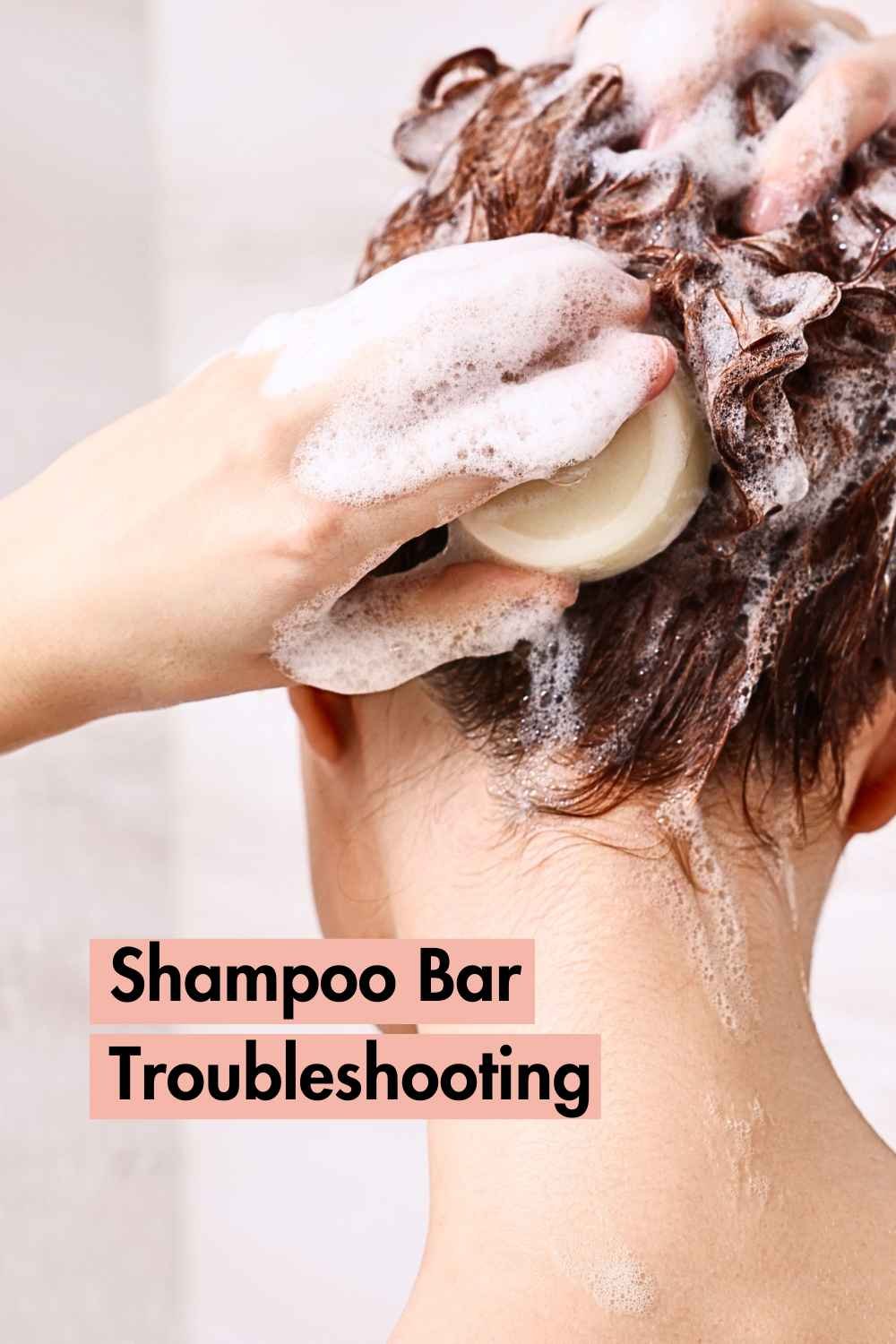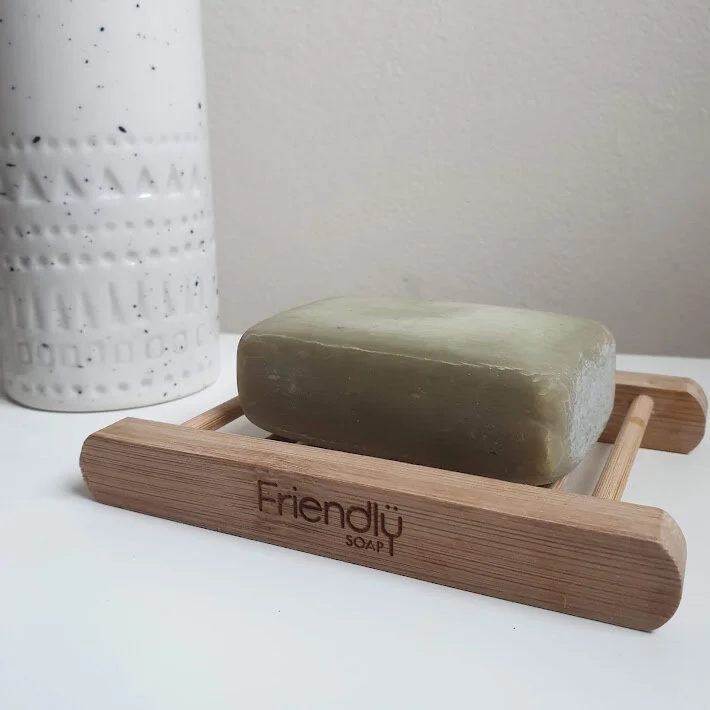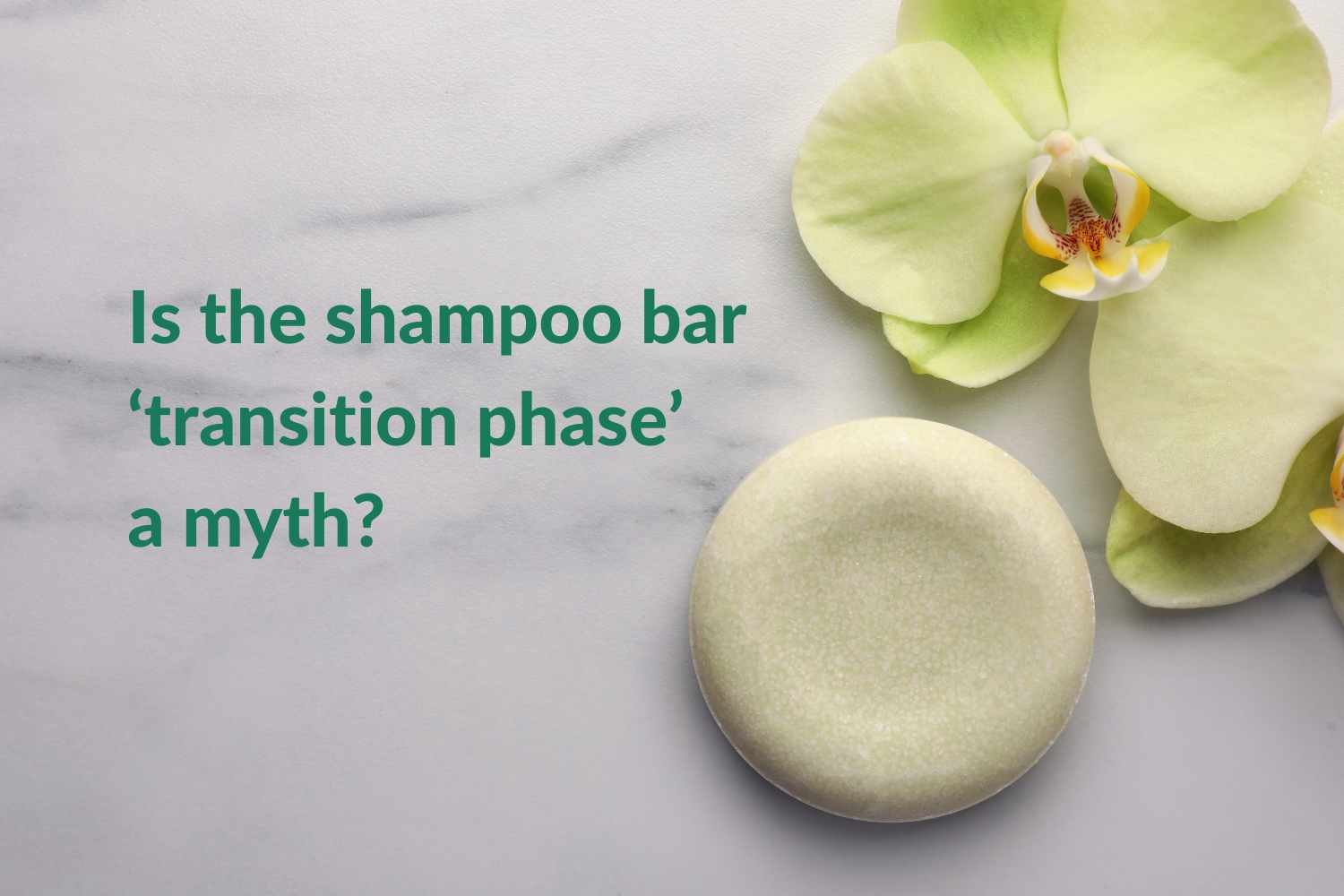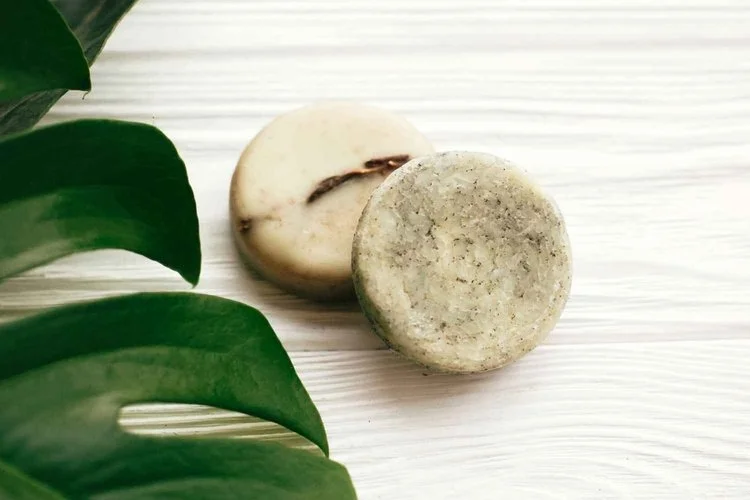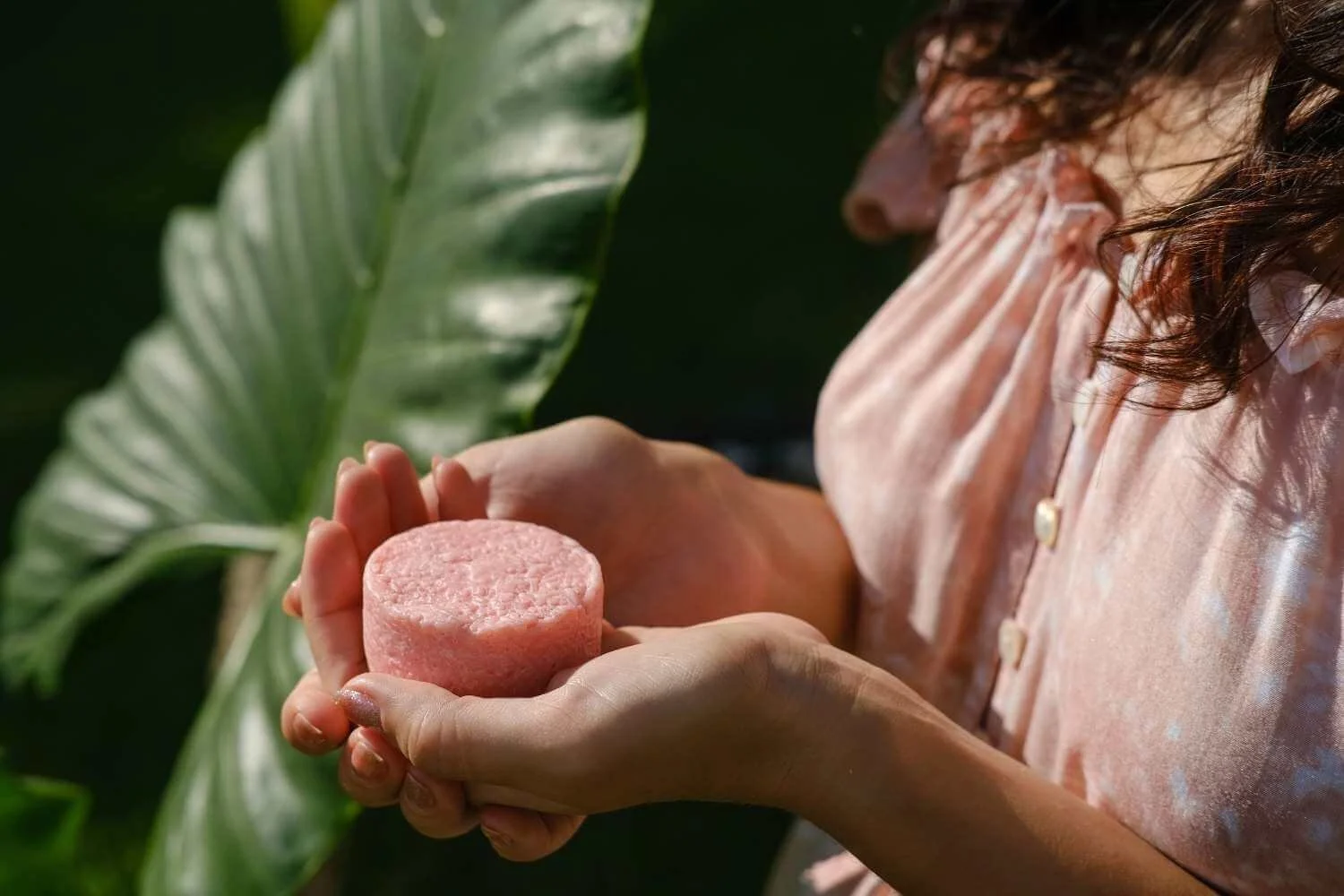Why Isn't My Shampoo Bar Working?
Is your solid shampoo leaving residue in your hair or maybe your hair has become greasy since using one? Keep reading to lean two reasons your shampoo bar may not be working
This page contains affiliate links to sustainable online stores.
Let me guess - you switched to a solid shampoo bar and now you’re wondering if this greasy nightmare will ever end?
I hear you, the same thing happened to me (and it wasn’t pretty).
It’s been over three years since I figured out why my shampoo bars weren’t cleaning my hair properly and I want to spread the word so that you can have a plastic-free bathroom too.
In this post, I'm going to help you find out why your shampoo bar isn’t working by listing the two most common reasons and what you can do about it.
Problem 1 - you’re using a soap-based bar
The main reason that many solid bars don’t clean your hair is there is no shampoo in them. They are literally bars of soap! These ‘fake’ shampoo bars are the reason people fail at going plastic-free.
What’s worse is you are made to feel like you are to blame because you’ve used “chemicals” on your hair. So you take their word for it and pour apple cider vinegar over your head, hoping your “transition” is complete soon so you can be clean again.
What’s in a soap-based bar?
The problematic shampoo bars are made from saponified oils - the technical name for mixing oils (like coconut or olive oil) with an alkali to make soap.
Why can’t you wash your hair with soap?
Your skin and scalp are acidic whereas soap is highly alkaline. This can become a problem when alkaline residues build up in your hair because soap is hard to wash out. A good shampoo bar will be pH balanced.
If you have hard water, the soap molecules bind to the minerals in the water and leave waxy deposits in your hair. Even after washing it multiple times, your hair will look greasy and straw-like.
If you have soft water, mineral build-up shouldn’t be a problem. If you have problems (which you probably will) it’s due to your hair type and the pH of the bar.
What is the solution?
Buy a shampoo bar that contains surfactants. Products containing two or more surfactants are the most effective.
In the next two sections, I’ll show you what ingredients to look for to recognise what kind of bar you have.
If you haven’t purchased a bar yet and you’re in the UK, check out my list of bars that contain shampoo and work in hard water.
How to read the ingredients in your shampoo bar
It’s actually quite easy to read the ingredients list on a shampoo bar, well, it is once you know what to look for! The ingredients in a bar of soap all look similar and many shampoo bars use minimal ingredients.
Common main ingredients in a soap-based shampoo bar:
Sodium Olivate (olive oil),
Sodium Palmate (palm oil)
Sodium Cocoate (coconut oil),
Sodium Sunflowerate (sunflower oil),
Sodium Shea Butterate (shea butter),
Sodium Castorate (castor oil),
Water (aqua) & a preservative,
Glycerine (often derived from palm oil)
When natural oils are mixed with sodium hydroxide (a process called saponification) it makes soap. That is why the ingredients have ‘sodium’ in the name. Potassium hydroxide is another chemical that can be used to make soap.
Common naturally-derived surfactants in shampoo bars
It is important to remember surfactants can differ in how much they foam, how mild they are, their pH level, manufacturing quality and source. Some brands make their own bars with high ethical standards in mind and others buy premade bars at wholesale prices and sell them under a brand name.
Here is a list of surfactants:
Sodium Cocoyl Isethionate (most common)
Sodium Coco Sulfate (a sulfate)
Sodium lauryl Sulfoacetate
Decyl Glucoside
Lauryl Glucoside
Coco Glucoside
Cocamidopropyl Betaine
Disodium Cocoamphodiacetate
Disodium Lauryl sulfosuccinate
Sodium Lauryl Sulfate (SLS)
Sodium Laureth Sulfate (SLES)
Tap to pin to your zero waste Pinterest board:
Problem 2 - you have product build-up
What is product build-up?
Product build-up is when hair products, like silicones, petroleum, or natural vegetable butter and oil have accumulated on your hair over time. The product is sitting on your hair weighing it down and leaving it feeling lifeless. This is more likely to happen if you have hard water.
How do you know you have product build-up?
If you have product build up your hair will feel dry and limp. It may not be clean after being washed or feel greasy after a day or two of washing. Your conditioner might not feel like it’s conditioning your hair properly.
What are silicones?
Silicones are synthetic polymers made from sand. They are popular ingredients in haircare and skincare products because they are vegan, non-comedogenic and hypoallergenic. In shampoo they coat the hair leaving it smooth and easy to untangle. They are in many conditioners which means they remain on your hair until you next shampoo it.
Why are silicones a problem?
Silicones are resistant to a lot of shampoo cleaning agents which means the surfactants in your shampoo bar are probably too mild to wash the silicone out.
Are silicones just in conditioner?
No, silicones are in all kinds of products, including some shampoo. You will also find silicone in leave-in conditioners, hair masks, makeup, sunscreen and various skincare products.
Look for: ingredients that end with -cone, -conol or -siloxane
Examples - dimethicone, dimethiconol, polydimethylsiloxane, polysilicone-11, polymethylsilsesquioxane
If you are using a conditioner or styling product with silicone, your shampoo bar will not be able to wash it out. You need to avoid silicones completely or use a bar with strong surfactants. I’ve got a couple of ideas about which bars might work, but I don’t want to recommend them until I know for sure.
How do you remove product build-up?
To remove product build-up you need to use a shampoo with stronger surfactants, like sulfates. It really depends on your hair and what substance has built up in it.
If your hair only has product build-up from natural ingredients (like vegetable oils) combined with minerals from hard water, an effective sulfate-free shampoo may work. I have a list of solid bars that work in hard water so you can choose one with milder sulfates if you’d really like to get your hair clean.
If you suspect silicones have built up in your hair you will probably need to treat it with a “clarifying” shampoo or a product that contains sulfates. If you don’t want to try a sulfate shampoo bar from my list, then you could try an eco-friendly liquid product.
Organic clarifying shampoos from ethical brands:
Avalon comes in 100% recycled plastic packaging (it contains the gentler sulfate sodium coco sulfate, alcohol, wheat). You can get it from Ethical Superstore* or Big Green Smile*
Attitude (Contains the gentler sulfate sodium coco sulfate). Buy it from Big Green Smile*
Both brands also have a clarifying conditioner.
Shampoo bar solutions
If your shampoo bar isn’t working, it’s usually because you’re using a bar of soap falsely marketed as shampoo. You will also encounter problems if you’ve got product build-up in your hair.
Here’s what you need to do next:
Ensure your shampoo bar contains surfactants, not soap.
Check all your hair products for silicones (dimethicone)
Use a clarifying shampoo to remove silicones if your hair is super greasy (and deep condition after)
Figure out which type of bar suits your hair.
If you found this helpful, please give it a share. As a work at home mum, I really appreciate it! You can also say thanks by buying me a coffee.
I’d love to hear how you are getting on with your shampoo bar? You can send me a message in the comments at the bottom of this page and I’ll get back to you asap.
Sophie xx
TAP TO SHARE WITH YOUR FRIENDS:

